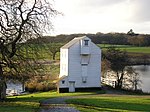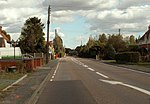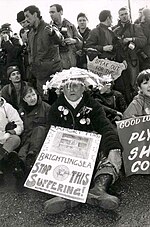Thorington railway station
1866 establishments in EnglandDisused railway stations in EssexEast of England railway station stubsFormer Great Eastern Railway stationsPages with no open date in Infobox station ... and 4 more
Railway stations in Great Britain closed in 1957Railway stations in Great Britain opened in 1866TendringUse British English from September 2017
Thorington railway station (also Thorrington railway station) was a station in Thorrington, Essex on the line (now called the Sunshine Coast Line) from Colchester to Walton on the Naze and Clacton, opened in 1866 and closed in 1957. The station was situated in between Alresford and Great Bentley. It was closed due to its close proximity to the much busier station at Great Bentley, just half a mile down the track.
Excerpt from the Wikipedia article Thorington railway station (License: CC BY-SA 3.0, Authors).Thorington railway station
Great Bentley Road, Essex
Geographical coordinates (GPS) Address Nearby Places Show on map
Geographical coordinates (GPS)
| Latitude | Longitude |
|---|---|
| N 51.8495 ° | E 1.0367 ° |
Address
Great Bentley Road
CO7 8HU Essex, Thorrington
England, United Kingdom
Open on Google Maps








